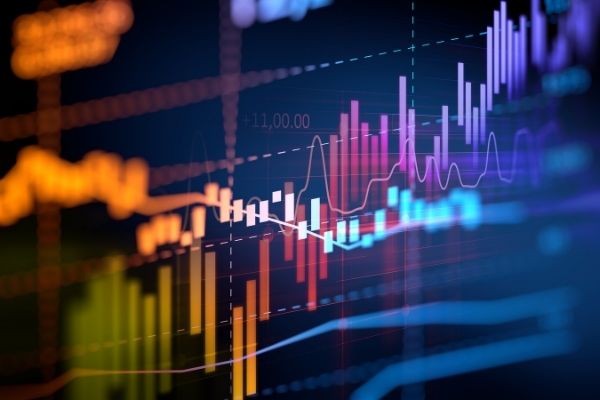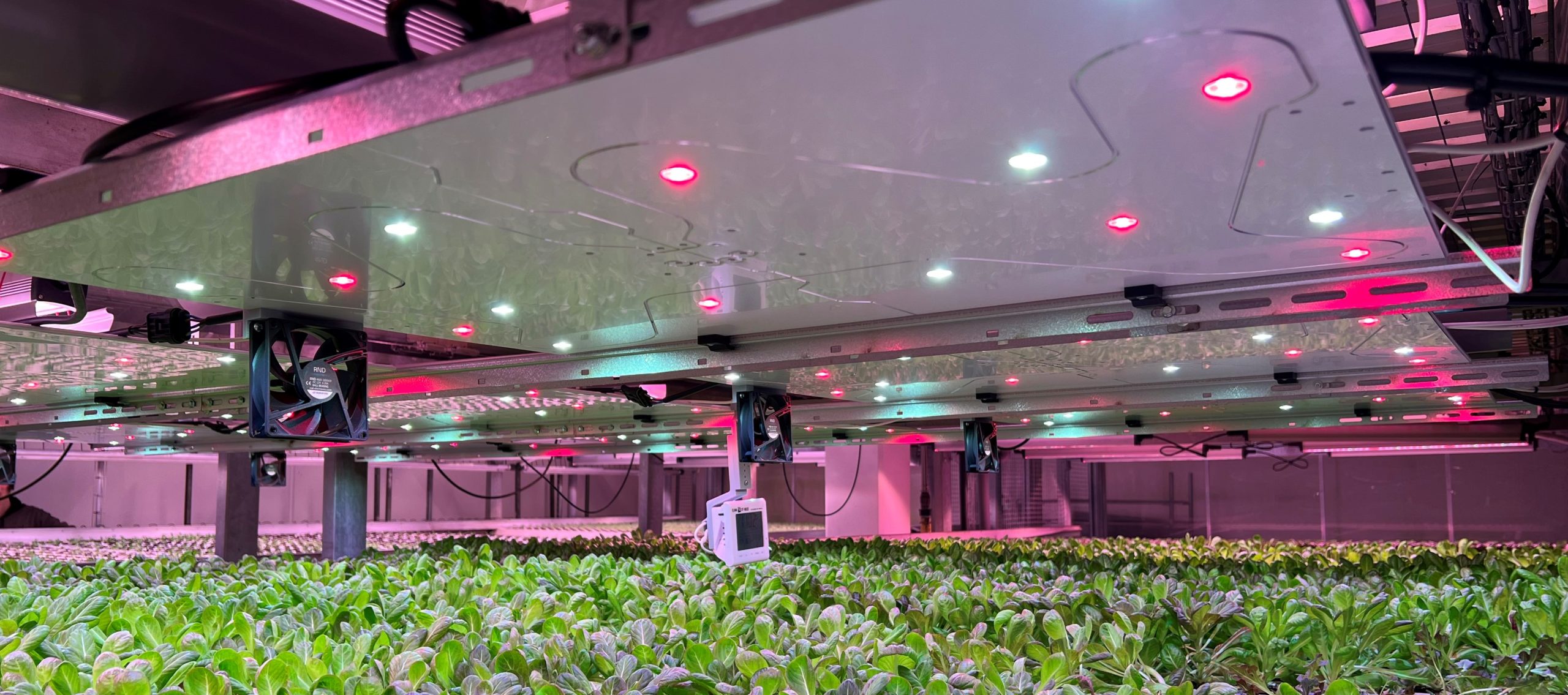Vertical farming is not a new phenomenon in this day and age. As urban growers expand farming locations to warehouses and shipping containers and develop new techniques to grow and harvest crops in small spaces, the LED industry has come up with innovative solutions to meet the needs of these modern farms.
The Boom of Vertical Farming
Vertical farming, the practice of growing plants vertically stacked in layers, has risen in popularity in recent years. It is an efficient way to cultivate crops for consumption in indoor facilities, and the growth of this practice has been accelerated by rapid global urbanisation. As land becomes scarce, it is an efficient way to produce enough harvest in a small space.
With the burgeoning vertical farming movement, farmers have come to perfect their growth methods. Farmers these days optimise their artificial light sources and climate within their farm and the technique used to farm, such as the use of nutrient-rich liquids or gases instead of soil.
As vertical farming research increases and is made available to the public, many farmers have also taken their farms elsewhere, in creative places such as abandoned warehouses, empty shipping containers, or even underground.
Techniques of Vertical Farming
Vertical farming is also part of Controlled-Environment Agriculture (CEA). It takes place indoors, and farmers modify the farm’s climate, light cycles, humidity, plant nutrition, and more to increase harvest yield and extend growing seasons.
Typically, vertical farmers do not use soil as it is a heavy medium and will strain shelving and suspension equipment. Instead, the three main techniques of vertical farming are popular amongst growers: hydroponics, aquaponics, and aeroponics. Each one brings unique benefits and challenges, and they all require dedicated grow lights for plants to thrive.
Hydroponics
As the name suggests, hydroponics is the growing of plants with water instead of soil. In hydroponic vertical farming systems, plant roots are submerged in liquids. These liquids are a mix of water and macronutrients to nurture plant growth, such as nitrogen, phosphorus, sulphur, magnesium, calcium, and traces of other elements.
Some hydroponic systems will include inert (unreactive) solid mediums as soil substitutes to provide the support that is missing from liquids. These mediums include gravel, sand, or sawdust.
Vertical hydroponics can be used to cultivate various crops, such as lettuce, tomatoes, cucumbers, strawberries, celery, and various herbs.
Aquaponics
Aquaponics is the growing of plants with water and the aquatic organisms, such as fish, that live in water. In a way, it is hydroponics taken a step further, and it sets to imitate nature itself in a sealed system.
In vertical aquaponics, water flows from the top of the columns through a wicking material that acts as a medium from which plant roots absorb water and nutrients. Once it has made its way through the plants, the water falls into the fish tank.
In this system, there is cooperation between plants and fish. Waste products and carbon dioxide from the fish are converted into fertiliser for the plants, and the plants produce oxygen for the fish. Many crops, such as leafy greens, and certain fruits, such as strawberries, can be grown using this technique.
Aeroponics
Vertical aeroponics is the growing of plants without submerging their roots in either solid or liquid mediums, such as water or soil. Plants are suspended in the air and arranged neatly in columns, and liquids are misted in the air chambers so the plants can absorb them.
Out of the discussed vertical farming techniques, aeroponics is the most sustainable and cost-efficient one, using up to 90% less water than the other two systems. Without using solid or liquid mediums, farmers also benefit from not having to drain excess nutrients that may clog up planters and promote bacterial growth.
Microgreens, leafy greens, and several fruiting and rooting crops can be grown using this method.
Types of Vertical Farms
Though vertical farming has been around for just over a century, the modern vertical farming concept was first introduced about two decades ago. This modern concept focuses on growing crops for consumption in urban areas where land is scarce. It also places an importance on a wiser usage of our precious water resources. Thus, modern vertical farming began in buildings, where plants are cultivated in a tower-like structure.
These days, vertical farmers have become more and more creative, and they have started taking their farms elsewhere, to unexpected places such as abandoned warehouses, empty shipping containers, and even underground.
Warehouse Vertical Farms
Modern vertical farmers have taken to cultivating crops in abandoned warehouses due to land scarcity. Many who live in cities may find it easier to rent or buy a section of an abandoned warehouse than to find an open space for traditional horizontal farming.
For increased efficiency, farmers may draw on the help of collaborative robots that can respond to commands made remotely.
Shipping-Container Vertical Farms
Vertical farmers have also taken to cultivating crops in shipping containers that are recycled for this very purpose.
Sealed tight without windows with strong and protective walls, shipping containers serve as perfect climate-controlled chambers that prevent interference from changing climate patterns. Come rain or shine, conditions inside the farm will not be affected in the slightest.
Aside from these farms making for a stable growth environment, shipping containers are also easily stackable. This means that farmers can save even more space and cultivate even more crops on the same plot of land.
Underground Vertical Farms
People have long made use of underground spaces, and these days, vertical farmers have taken the cue from other industries to cultivate crops beneath the ground level.
Underground vertical farms, also known as ‘deep farms’, utilise refurbished underground tunnels or abandoned mine shafts. These spaces are not only cheap to rent or purchase, but they also have lower operating costs.
Deep farms, like shipping-container vertical farms, are fully protected from the outdoors. Thus, they are more easily optimised in terms of climate and lighting. Underground farmers can also funnel nearby groundwater to their farms which can reduce the cost of water supply.
Choosing the Right Lights for Vertical Farming
No matter which type and technique you decide on, it is essential to consider lighting options early on. This is because farming will take place indoors, and, depending on the location, there may be no windows on the farm at all, in which case the only light source available for plants will be artificial and determined by growers.
Many modern growers understand LED grow lights can improve efficiency in vertical farming through their customisable light spectra, wide range of available colours, long service lives, efficient heat control, and compact sizes. Thus, they prefer to make this investment instead of purchasing traditional luminaires such as High-Pressure Sodium (HPS) or fluorescent grow lights, which may be slightly cheaper upon initial purchase but are prone to burnout more quickly.
Farmers can hang LED grow lights from the ceilings of their farms to bathe plants in swathes of white, red, blue light, or a combination of all three. They can also install LEDs on walls and between columns and panels of plants to ensure that each plant receives sufficient light for photosynthesis.
Aside from implementing LED grow lights, urban farmers may also opt for self-monitoring technology for increased convenience. We understand that city dwellers interested in farming may have busy schedules outside of horticulture, or some farmers may be taking care of several vertical farms in different locations.
Our lights on offer come in panels fully equipped with Internet of Things (IoT) capabilities. They are compatible with temperature, light, heat, and other sensors that can trigger actions in our LEDs, such as turning on and off, changing colour, and brightening and dimming. This makes farms completely self-sufficient on a day-to-day basis.
Alternatively, growers can integrate surveillance cameras in their farms and control their lights remotely on their mobile devices based on data received from sensors.
Learn More about Vertical Farming
Vertical farming is an efficient and cost-effective way to produce high yields in urban areas and around the year, regardless of seasonality. With the help of LED grow lights, lightweight shelves, and other equipment, it has become possible to farm almost anywhere, using any technique.
Modern farming requires modern lighting solutions. LED iBond is committed to innovation within the vertical farming industry, and we are constantly looking to improve and enhance the growing process.
For more information, please contact Sales on the button below. We look forward to talking to you.













